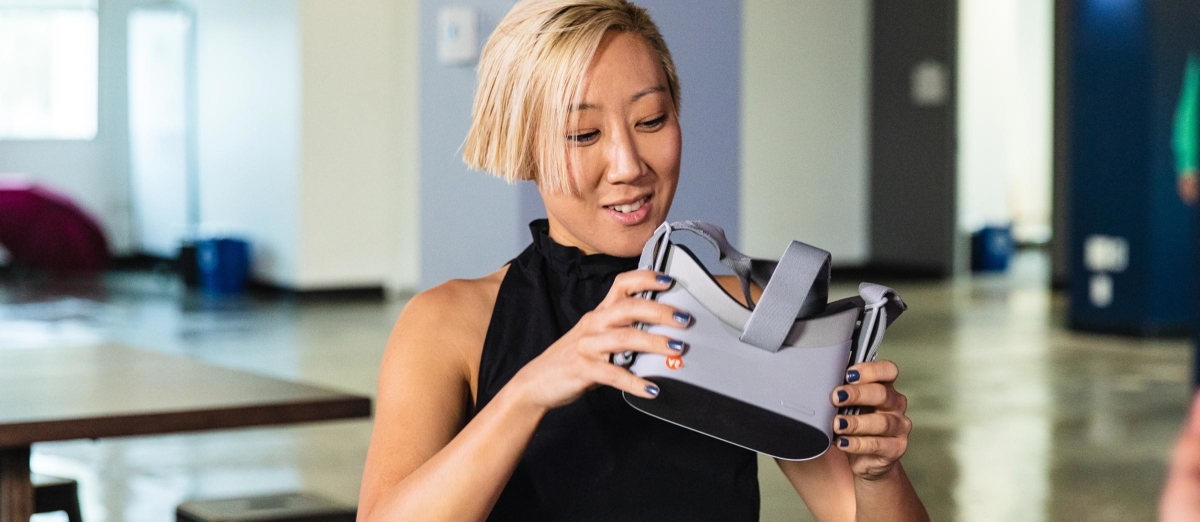The candidate experience can feel pretty dehumanized today, with Zoom meetings, emails, social distancing, and more. But with VR, we’re reimagining that process.
An immersive assessment allows candidates to put on a VR headset and show off their skills in realistic simulations that mimic what they’ll face on the job.
Let’s explore an example. As a candidate for either a new role or a promotion, you’ll be given a headset, or perhaps you’ll receive it in the mail. In the experience, you’re sitting across from a co-worker and prompted to offer coaching on a relationship with another colleague or on work performance. As you coach the employee, behavioral data on your performance is being captured: verbal data like keyword and speech pattern analysis, as well as nonverbal data like eye contact and gesturing.

Unlike paper assessments and interviews, the immersive assessment engages you physically, mentally, and emotionally. You are evaluating realistic situations, thinking critically, and listening and speaking to colleagues. It tests your proficiency in the desired skills for the role, such as leadership, communication, conflict resolution, and more. Additionally, you walk away from the experience with a heightened perception of the company and its hiring practices. They appear to value their employees, their culture, and innovation overall. That’s a company worth working for.
At the same time, immersive assessments are also extremely insightful for the company and its hiring managers. Immersive assessments measure candidates’ skills and capabilities using people, places, situations, and conversations from the real workplace – what researchers refer to as “real-world inputs.” Since behavior in VR is a close indicator of behavior in the real world, immersive assessments help to show hiring managers how candidates will actually perform.
However, immersive assessments must be expertly designed to achieve this outcome. VR-based content is not enough. The content needs to be developed with the desired skills and behavioral analytics in mind. Ultimately, the analytics will contribute to a talent profile complete with predictive insights into future performance. The business can then use the information, along with traditional methods like interviews, to make objective decisions for the perfect hire or promotion.
This is the reimagined candidate experience – differentiated and memorable for candidates, while powerfully insightful for the business.
